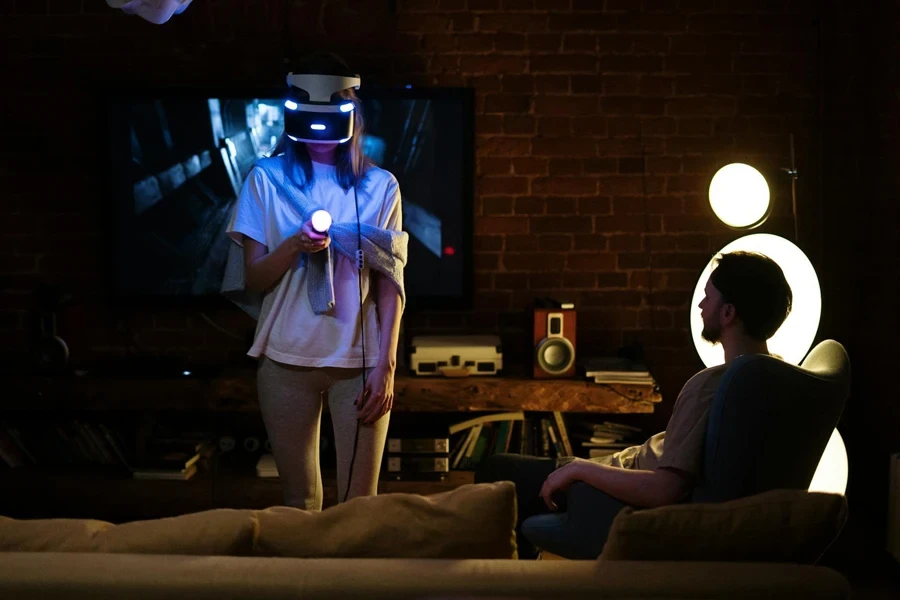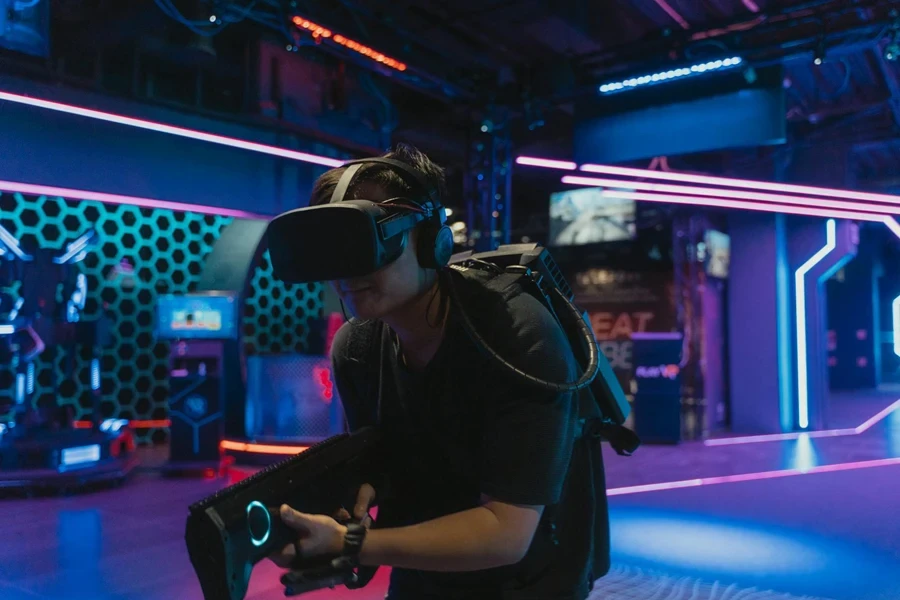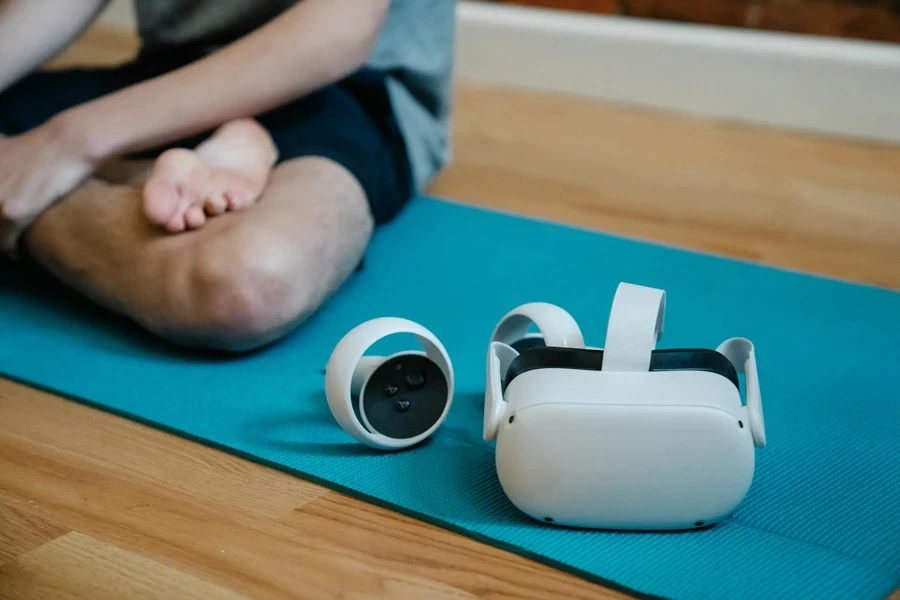Table of Contents
● Introduction
● Market overview
● Different types and their features
● Things to consider when selecting products
● Conclusion
Introduction
The rapid advancements in Virtual Reality (VR), Augmented Reality (AR), and Mixed Reality (MR) are transforming the consumer electronics landscape. These technologies offer immersive and interactive experiences, revolutionizing various industries such as gaming, healthcare, education, and manufacturing. This article explores the market dynamics of VR, AR, and MR, highlighting the current market scale, projected growth, and key trends. Additionally, an in-depth analysis of the distinct features of each technology is provided. Finally, essential considerations for selecting the right VR, AR, and MR products are discussed to help businesses make informed decisions.
Market overview

Market scale and growth
The global AR/VR/MR market was valued at USD 26 billion in 2019 and is projected to reach USD 242 billion by 2031, with a compound annual growth rate (CAGR) of 36% from 2024 to 2031. According to recent market analysis, the hardware segment currently dominates the market, driven by advancements in VR headsets and AR glasses. The software segment, accounting for 50% of the market share in 2021, is also growing rapidly due to the increasing trend of VR content creation and AR gaming.
Regional insights
Market segmentation reveals a diverse application across various industry verticals. The gaming industry holds a significant share at 20%, influenced by the rising popularity of AR games. Other key sectors include healthcare, education, manufacturing, retail, aerospace, and defense. Geographically, North America leads with more than 35% of the global market share, attributed to the presence of major technology companies and high adoption rates. Europe follows as the second-largest market, while the Asia-Pacific region is expected to grow rapidly due to the booming automotive, manufacturing, and gaming industries.
Key trends
Key trends driving the market include the widespread use of smartphones and continuous technological advancements, enabling users to experience immersive digital environments. Additionally, the adoption of AR/VR/MR technologies is increasing across various sectors for applications such as training, remote assistance, and enhanced customer experiences. The intersection of AR/VR and IoT trends further boosts the integration of these technologies into everyday business operations, enhancing productivity and innovation.
Different types and their features

Virtual reality (VR)
Virtual Reality (VR) creates entirely immersive digital environments using advanced headsets with integrated sensors and displays. The technology typically includes features like 6DoF (six degrees of freedom) tracking, allowing users to move freely and interact with the virtual space. Modern VR headsets, such as the Meta Quest 2 and PlayStation VR, use high-resolution OLED or LCD screens with refresh rates up to 120Hz for smooth visuals. The hardware often incorporates inside-out tracking using built-in cameras to monitor user movements without external sensors. Applications of VR span across gaming with titles like BeatSaber and Half-Life: Alyx, training simulations that provide hands-on practice in a controlled environment, and educational tools that offer interactive learning experiences.
Augmented reality (AR)
Augmented Reality (AR) overlays digital content onto the real world, leveraging devices like smartphones, tablets, and AR glasses. AR technology utilizes cameras, accelerometers, and gyroscopes to track the user’s environment and position. Advanced AR systems use SLAM (Simultaneous Localization and Mapping) to understand spatial relationships and create accurate overlays. AR applications are prominent in e-commerce, allowing users to visualize products in their space, and in marketing, where interactive ads engage customers. Notable AR platforms include Apple’s ARKit and Google’s ARCore, enabling developers to create rich AR experiences. Examples include IKEA Studio for interior design visualization and Snap AR for social media filters.
Mixed reality (MR)
Mixed Reality (MR) blends the physical and virtual worlds, enabling real-time interaction between both. MR devices, such as the Microsoft HoloLens 2, use a combination of spatial mapping, advanced sensors, and AI to anchor virtual objects in the real environment. The HoloLens 2 features holographic lenses with a field of view of 52 degrees, spatial sound, and eye-tracking technology to enhance user experience. MR is utilized in military training to simulate realistic scenarios, in product design to manipulate virtual prototypes in physical space, and in medical training to visualize and interact with 3D anatomical models. MR technology often includes gesture recognition, voice commands, and real-time collaboration capabilities to facilitate complex tasks and training exercises.
Things to consider when selecting products

Ease of use and integration
User-friendly solutions are crucial for effective adoption and integration into existing workflows. Products like Teamwork AR, which can be used immediately by anyone familiar with smartphones, exemplify this ease of use. Compatibility with existing systems is another critical factor. Solutions should support content reuse, such as importing PowerPoint presentations or Adobe images, to minimize the total cost of ownership and reduce technical barriers. Ensuring that the AR or VR product can integrate seamlessly with other software tools, such as IT service management systems, is essential for streamlining operations and maximizing efficiency.
Collaboration features
Effective collaboration features enhance the utility of AR, VR, and MR products in enterprise settings. Support for multiple users and group video rooms enables teams to work together in real-time, regardless of their physical locations. Digital twin technology is particularly beneficial for training and proficiency, allowing users to interact with virtual versions of equipment and processes. This technology not only improves training outcomes by creating realistic scenarios but also reduces the need for physical resources, thus cutting costs and enhancing safety.
Security measures
Ensuring robust security measures is paramount when selecting VR, AR, and MR products. Transport Layer Security (TLS) is essential for secure communication, providing end-to-end encryption over the internet to protect sensitive data such as passwords and financial information. Compliance with international standards like ISO 27001 is also critical, as it ensures that the solution meets rigorous information security requirements. Additionally, it’s important to choose products that disable legacy security protocols by default and offer the option to avoid storing recordings, ensuring data privacy and minimizing security risks.
Cost and ROI
Evaluating the cost and potential return on investment (ROI) is crucial when selecting AR, VR, and MR products. Different pricing models are available, including per seat, per development hour, and subscription-based options. For instance, subscription-based models provide consistent costs and are ideal for organizations planning to scale their use of these technologies. Assessing the potential cost savings and revenue increases is essential to justify the investment. For example, reducing travel expenses, speeding up troubleshooting, and improving training efficiency can significantly enhance the ROI of immersive technology solutions.
Conclusion

The rapid expansion of the VR, AR, and MR markets underscores their transformative potential across various industries. Understanding the distinctions among these technologies—VR’s immersive environments, AR’s digital overlays on the real world, and MR’s integration of physical and virtual elements—is crucial for leveraging their unique benefits. When selecting products, it is essential to consider robust security measures, user-friendly interfaces, seamless integration capabilities, effective collaboration features, and cost-effectiveness to maximize return on investment. These factors will ensure that businesses can effectively adopt and utilize these cutting-edge technologies.



